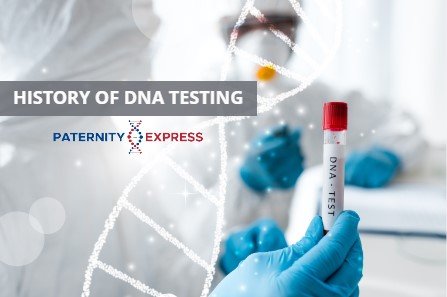
The History of DNA Testing
Sir Alec Jeffreys is credited as the inventor of DNA Fingerprinting in 1984 & while working at the Department of Genetics at the University of Leicester, England.
Although the history of our understanding what DNA is goes back much further.
What is DNA?
Deoxyribonucleic acid aka DNA is a double helix structure that holds the genetic code for life. It is made up of four nucleotide bases adenine (A), guanine (G), cytosine (C) and thymine (T).
1920s-1930s: Blood Typing and Serological Testing
The concept of blood typing was founded in 1901 by Karl Landsteiner the first use cases was in 1907. It was use on a wide scale during the first world war. Later on this method was used for relationship testing
Mid-1970s: HLA Testing
In the mid-1970s, scientists discovered the human leukocyte antigen (HLA) system, which allowed for more precise identification of genetic markers. This was a major breakthrough in the field of DNA testing, as it allowed for more accurate paternity and relationship testing.
1980s: RFLP DNA Testing
In the 1980s, scientists developed restriction fragment length polymorphism (RFLP) DNA testing, which allowed for even more precise identification of genetic markers. This was a major development in forensic science, as it allowed for DNA evidence to be used in criminal investigations.
1990s: PCR DNA Testing
In the 1990s, scientists developed Polymerase Chain Reaction (PCR) DNA testing, which allowed for the amplification of small DNA samples. This was a major breakthrough in the field of DNA testing, as it allowed for more accurate and reliable testing using smaller samples.
Early 2000s: SNP Arrays
In the early 2000s, scientists developed single nucleotide polymorphism (SNP) arrays, which allowed for the analysis of millions of genetic markers at once. This was a major advancement in the study of genetics, as it allowed for more comprehensive analysis of genetic data.
Today: NGS Sequencing
Today, scientists use next-generation sequencing (NGS) technology to sequence entire genomes in a matter of days or weeks. This has opened up new possibilities for personalized medicine, genetic engineering, and the study of human behavior and psychology.
First time paternity test was used in court
The Family Law Reform Act of 1969 allows courts to direct scientific tests for paternity in civil proceedings, and the Blood Tests (Evidence of Paternity) (Amendment) Regulations 1989 extended testing to include DNA samples. DNA testing can prove relatedness with up to 99.99% probability.
It should be noted that Family Courts will only accept DNA test results performed by an AABB accredited laboratory.
Conclusion
The world’s understanding of DNA testing has a long history and each step of that history has play an important part in our perception of how we perceive the science of DNA. In the future, as technology advances I’m sure advancements in science will further broaden our understanding of DNA fingerprinting.
